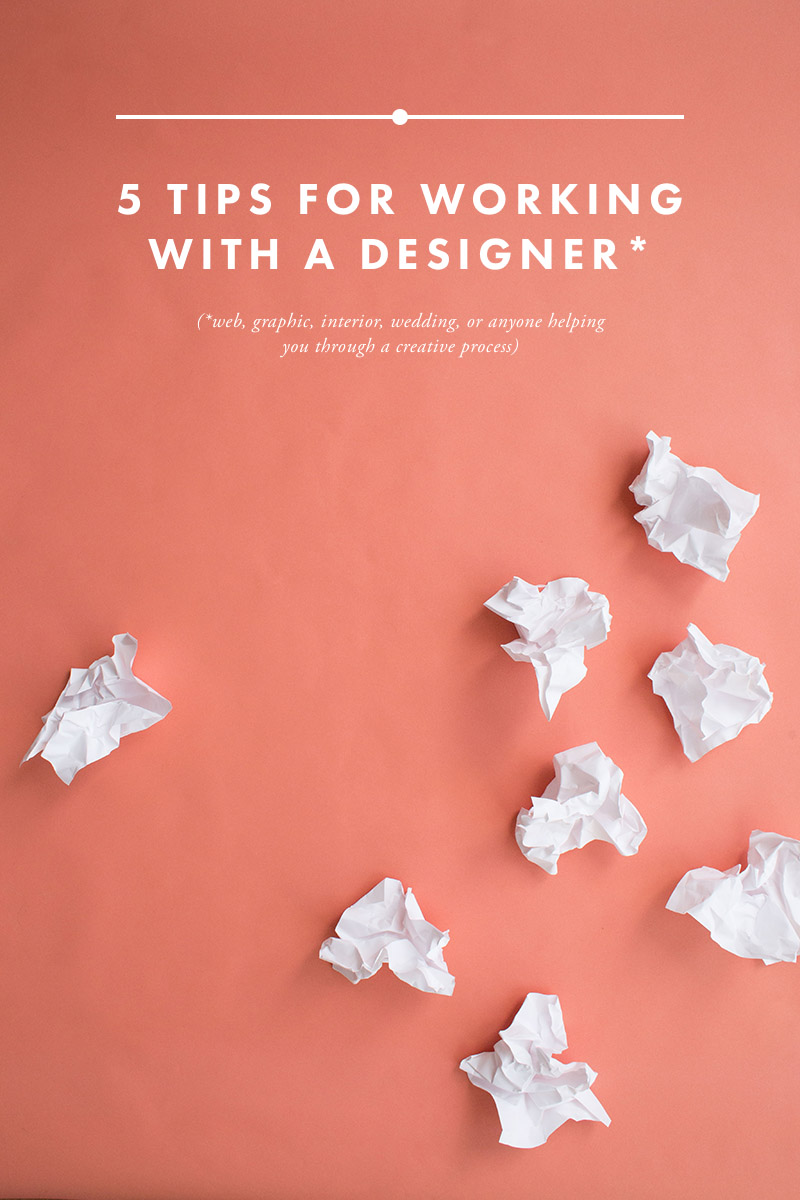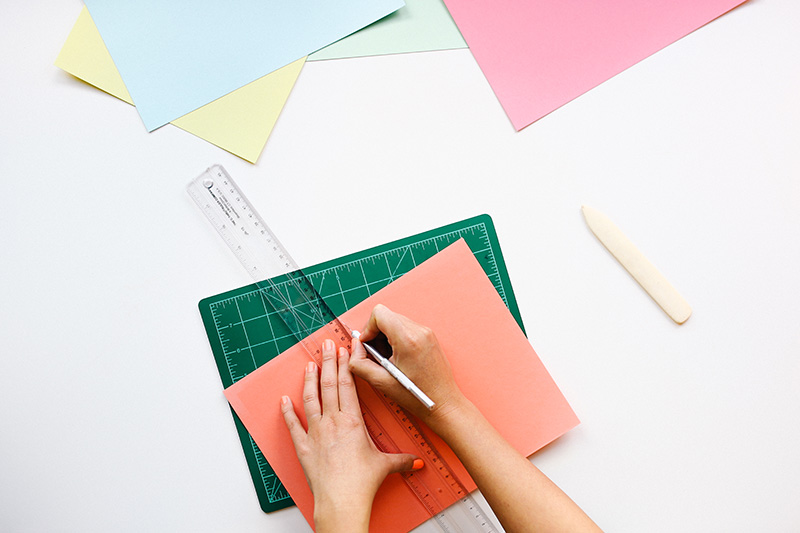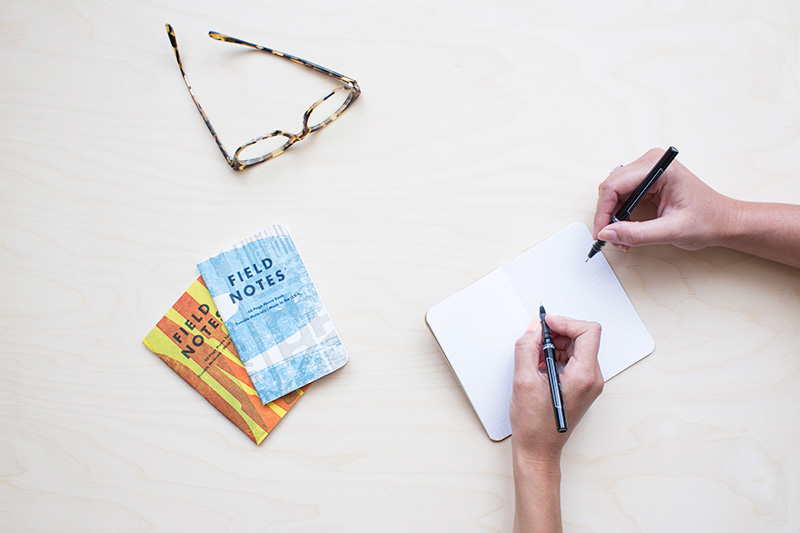
I’ve been thinking about this post and the tips in it for a while now, for two reasons. The first is that I’ve noticed the most successful, fun projects I work on all have elements of the below. The other thing is, I’ve been able to apply these ideas in my own life, usually when it comes to some type of interior decor conundrum, and even when entertaining. In fact, I’d wager that all of these tips are applicable to anyone when they’re working on a creative problem with outside help — and in many cases, even if you’re designing on your own!
So whether you’re redecorating your living room, planning a big event like a wedding, or even launching a new website for your business, you might find the creative process a little easier with these tips:
No. 1: What’s the problem?
This one is the most obvious tip, and also the most important (and frequently forgotten). Everything leads back to it, seriously! Asking yourself, “What’s the problem here?” is something you should do early and often, from the outset of a project, as well as when you’re in the thick of it and trying to revise ideas (more on that in a minute). The best, most fitting design solutions will always aim to solve problems, NOT just make something look pretty. As a simple example in web design, if a client has set a goal to grow their YouTube subscriber count, but there’s currently no way to access the channel on their home page — well, that’s a (really big) problem. And it might be one of many; for me, I personally love the challenge of taking a large set of problems, breaking them down like pieces on a jigsaw puzzle, then putting it all back together in the form of a cohesive website. Presenting all your problems will help make sure the overall design comes together in a way that solves (hopefully all of) the issues, but still functions together seamlessly.
Another way to think of “problems” is to think about things that bug you, or that you’re worried about. If you’re planning a wedding and worried about the line bottlenecking at the bar, this is something to bring up with your coordinator or caterer. Ok, I wrote that example because it’s total real life talk: at my own wedding, the spot where the venue recommended setting up a bar was also right in the middle of the most covetable “lounge” space at the wedding, and I was super anxious about it creating an annoying mass of people. When I brought this up, it’s what led to us finding a way to create a second bar in another space. It seems obvious, but I promise you, had I not voiced it as a problem for me, the venue would not have offered us the solution of the second bar.
Thinking about problems during the design process, while you’re refining and revising ideas, is also a great way to provide feedback. For example, if you tell an interior decorator that you “just don’t love” their selection of a particular fabric, it’s not especially helpful. Saying something like, “I’m worried about its durability and whether it can hide stains, and I’m concerned that it might feel too boring or plain when paired with the rug we already ordered,” is much more illuminating. Same thing with graphic and web design: “Can we find another font?” provides a lot less information than, “I’m not sure that particular font strikes the clean, modern feel I’m after — it feels as if it might be too intricate and difficult to read.”
Do you see the differences?

No. 2: DON’T be solutions oriented
Once you’ve pinpointed problems, often the impetus is to try and solve them. It’s tough, but limit this as much as possible. While your ideas should always be taken under advisement and design is absolutely a collaborative process, do remember that you’ve hired someone to help you out, and they’re here to offer you solutions which are informed by their professional experiences. Let them help you!
Here’s an example that you’ve probably seen if you watch any amount of HGTV: have you ever been watching some home makeover show, and the clients come to the designer with a new layout idea or piece of hand-me-down furniture they want to use? Typically, it doesn’t go over too well. But the truth is, the clients offering those unsolicited solutions are really trying to tell the designer about a problem they have (and so we circle back to number 1)! If they want to incorporate existing furniture, perhaps they’re concerned about the overall budget. Or, maybe it’s a priority to incorporate family heirlooms, and this hasn’t been voiced previously. Or when they say something like, “Hey, we want to turn this space into a walk-in closet!” there’s a need for more storage, or they don’t understand the amount of storage that’s already been incorporated into the design.
All that being said, I think offering ideas is still a great way to get creative juices flowing and to spark a discussion between you and a designer. For example, in my own work, if a client points out a detail they like from a painting or photograph, it’s my cue to incorporate a similar feel into some element of their design. I always encourage clients to share lots of ideas, but now that I think about it, they’re most beneficial at the beginning of the project.
No. 3: Get a handle on your end goals
Another way to put this is — what does a successful end product look like to you? This can be the hardest one to nail down, because it requires you to sit and really think about what you’re trying to get out of the project. Raise your hand if you’ve used a site like Pinterest to save ideas for a wedding, home decor, or graphic design? It can feel really easy to point to all that inspiration and be like, “That. That’s what I want.” But while this can be immensely helpful from an aesthetics standpoint, the truth is it doesn’t often speak to what your actual project goals are. Sharing clear goals provides the framework for any good design, because all the aesthetic decisions can be made within the context of your end goals!
In graphic and web design, often those goals are related to overall business and marketing aims. It’s absolutely vital that you understand those goals before embarking on a major design project, so be sure to think about how you’re trying to grow or change your business ahead of time.

No. 4: Share your concerns
Have solutions been presented and there’s still something bugging you? Speak up! Try as we might, all designers, regardless of field, have yet to master the art of mind reading. The more you share your concerns and ask questions, the more likely you’re going to get one step closer to a final product that you’re in love with. Here’s why: most of the time when concerns and questions are brought up, it actually reveals more problems to solve. Even when you do a great job of thinking through all the issues around a design, it’s inevitable that you’re going to forget a couple things (anyone who’s ever planned a wedding can attest to this, right?). As you go through the process, you might even find that you change your mind, which is ok too! Keeping the flow of info open and honest is vital to making sure the design process adapts to all your needs. Remember, there are no bad questions when it comes to problem solving — the more you know as a client, the better armed you are to understand what’s being designed for you, which will force you to think about all your “problems” even more!
Here’s a personal example I’ve encountered when designing websites. Occasionally, a client will ask for a high level of customization on a particular feature, like a slideshow, for example. Once they see all the design elements, they might ask me a question like, “Is it going to be hard to update all of this on the back end of my site?” To me, the answer to this question is subjective — what would make it seem “hard” to one client might not be difficult for another. So instead of answering yes or no, it’s worth talking about site maintenance in general. Them asking that question, in my mind, shows they may not understand the product we’re building for them and what it might require of them. By understanding the concern, we can ensure we talk through all the potential issues, and perhaps even change up the design solution to better meet their needs.
In a similar (though random!) example, it’s like if an interior design client expresses that they want pristine white marble countertop, but then mentions a concern that they’re slow to clean up spills (which, as I understand it, is what causes stains on marble). In that case, it’d probably be worth exploring another material, right?
No. 5: Be flexible
This one is super important too. Sometimes we can get so attached to our aesthetic vision that when elements of a design don’t work or function the way we envisioned, it can be frustrating and disappointing. Here, I’d advise you to stay flexible and keep the end goals in mind — if you’re still on your way to satisfying all those goals, then the project is successful! In any creative process, there are always surprises, mishaps, and tons and tons of changes. Remembering to go with the flow, and that it’s all part of one big design adventure, will help make the process fun and (hopefully!) reduce the stress.
What about you?
Have you ever embarked on a major creative process? What lessons did you learn along the way? Would you do anything differently if you had to do it again?
I hope these tips have been helpful and illustrate how all design/creative processes are actually pretty similar. Even if you’re not working with a web designer any time soon, it’s probable that you’ll encounter some sort of creative process down the line — hopefully, these tips will give you a new perspective on how you can approach it!







My tip – just hire you. You’re an absolute wizard with translating a vision into reality.
Great post, which any “client” should maybe be required to read and mull over before embarking on a project with a designer! So many people just aren’t clear on what they need, or don’t have strong opinions on what they love or don’t love. Those are important for people to get clear on before taking on a project. I love what you said about being more specific than just “I don’t like that.” Clients (or like you said, even people just designing for themselves), would benefit so much from getting clear on why they don’t like something, or what they would like better. I think a lot of people see something and they know they don’t like it, but they don’t know why…but if they thought about it, they might be able to figure it out. It’s an important point!
Fab tips! Thanks for sharing!
<3
katsfashionfix.blogspot.com
Great tips, I think maybe I should keep these in mind as we go through the design process together! Haha!
Xx Taylor
http://lightscameracatwalk.com
Perfect, agree 100% with everything here. Wether it’s my first love of web design or my second of home design.
Jess
http://www.citycomfortsdc.com
Fabulous article and spot on! Thanks for writing a feature from the creatives point of view :)